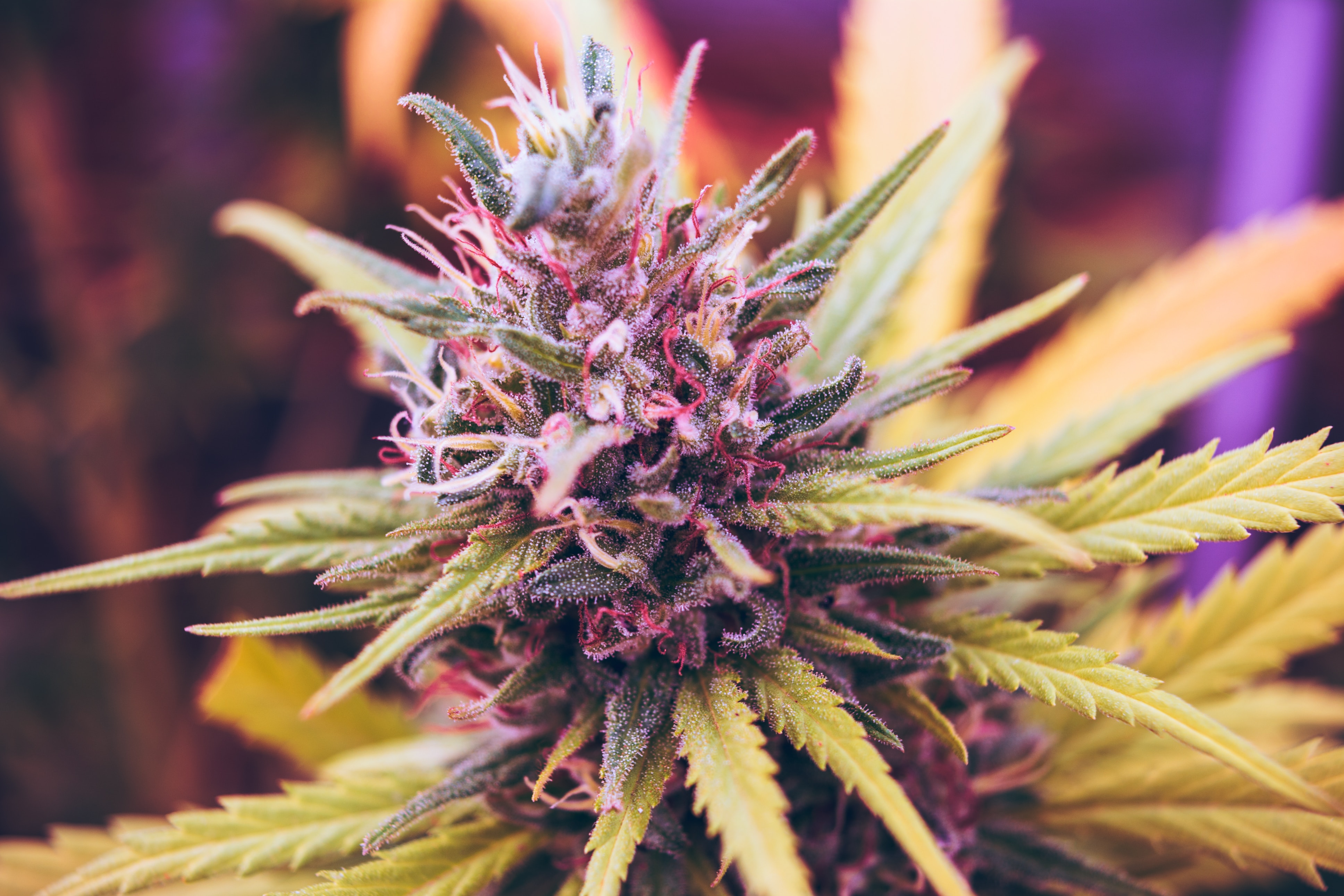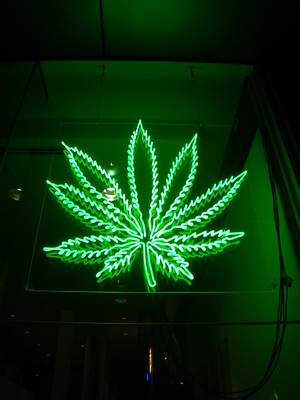Although cannabis in the marketplace is not sourced from “wild grown” material, as are several important herbal supplements, there are factors associated with ecological systems influencing secondary metabolite profiles. Chemovar status has the greatest significance on the phytochemical makeup of cannabis, which is greatly impacted by the plant genetics. Small et al. (2016) noted that the recent phenomena of high THC strains show a heterogeneity of secretory gland head size, based on selection pressure that reflects genetically unstable plant populations. Along with the genetics, the private knowledge of grower or producer also has tremendous effect on the product.
This blog post will explore ramifications associated with production parameters, physiological stress, and elicitor effects. See this previous post that focused more exclusively on light and water effects on secondary metabolites.
Backer et al. (2019) reported that several elements increased the THC levels – increased plant density, optimal temperature and application of plant stress hormone ABA. The light intensity also greatly influenced the concentration of THC and CBD per meter squared. Based on review of existing literature the optimal light spectrum, intensity and duration has not yet fully elucidated, except perhaps by specific growers and held as private knowledge. Until this is more broadly known, modeling the various influences will be difficult. An additional piece of data that would be worthwhile is whether multiple influences act in a linear or more complex fashion to alter the makeup of cannabinoids and terpenes.
A more recent innovation, LED lighting, displays greater spectral elasticity and lack the heat associated with more traditional High-Pressure Sodium Vapor (HPS) lights. Bilodeau, et al. (2019) described the influence of different light regimens. They provided additional support for the strategy of short blue light photoperiod (12/12) to increase cannabinoid levels. They found that red light treatment increased number of roots/plant, flowering quantity and duration. Although no association between root and flower numbers has been elucidated, I’m curious to see mycorrhizal inoculation and red-light exposure combined might increase cannabinoids and/or terpenes. Ecological influences are rarely a single element but mimicking complex inputs can be challenging to model statistically.
Magagnini et al. (2018) combined blue light and UV-A to increase levels of CBG. Previously, Lydon, et al. (1987) had reported that UV-B exposure increased THC concentration, that CBD was more labile to UV-B exposure than either THC and CBC. This points to opportunities to use lighting strategies for altering the phytochemical profile to match clinical needs focused on minor cannabinoids.
Blue light dwarfing is a known industry phenomenon leading to a plant habitat more horizontal than vertical as found in cannabis plants grown in full spectrum lighting. Researchers were able to increase total cannabinoid content by 66% using blue regimen compared with HPS lights (Namdar, et al., 2019). Is there a useful trade off of plant size to gain increased cannabinoid concentration that might be influenced by new harvesting strategies?
Harvesting strategies in general are underappreciated as a quality tool. In reporting the agricultural practices at GW Pharmaceuticals, Potter (2014) noted that kin function within populations strategically allocated primary and secondary metabolite synthesis based on environmental stressors. This suggests a sampling strategy to normalize the variation in secondary metabolites.
In an unsuccessfully attempt to use leaf cannabinoid content to predict floral levels, Richins et al. (2018) did discover that if chemovar was THC dominant, there was almost no CBD in the leaf; while in CBD dominant chemovars, at least 0.5% CBD was found in the leaf. They also characterized several high THC Canadian and Dutch strains, finding that those chemovars were associated with predominant terpenes b-myrcene, a- and b-caryophollene, terpenoline and d-limone. The different strains were not sourced from the same chemovar heritage, so the similarity might be driven by the selection for high THC content.
Beyond light influences, Caplan et al., 2019 reported drought stress effect increasing terpene content in following medicinal plants Melissa officinalis, Nepata cataria, and Salvia officinalis. I imagine similar changes to terpenoid profiles might be gained in cannabis. Often noted for its aromatic quality, many of the terpenes produced by cannabis are known to possess insect-repellent properties. Among these are alpha and beta pinene, limonene, terpineol and borneol. Hood et al. (1973) noted that relative concentrations of terpenes with cannabis trichomes differed substantially from the volatiles detected in the atmosphere surrounding the plant. This suggests that specific terpenes maybe released in response to herbivory, which should alter the terpenoid profile that remain stored in the trichomes. As a strategy could a specific ration of these compounds be generated that has specific therapeutic properties?
If we approach altering the secondary metabolite through soil influences, it’s unclear whether inoculating cannabis plants with mycorrhizal fungi will do much to increase the secondary metabolite cannabinoids and terpenes. Pate’s review (1994) of the chemical ecology of cannabis provided evidence that soil potassium was negatively correlated with the cannabinoid concentration, suggesting that mycorrhizal association might reduce D-9-THC levels. Mycorrhizal fungi extend the reach of plant root system’s access to soil K in exchange for soluble sugars produced by the plant during photosynthesis.
Plant morphological change also mean cannabinoid ratios can be altered depending on the phase of plant growth. This becomes important in producing plants with more dominant ratios of specific cannabinoids. de Meijer et al. (2003) showed that in early growth stages the precursor CBG is limited, but that of the cannabinoids produced downstream (THC, CBC and CBD), CBC is most efficient during early growth, thus increasing its relative ratio. As the availability of CBG increases so does the relative concentration of THC and CBD. At late stages CBG levels are substantially reduced.
Finally, looking at micropropagation studies to characterize their impact on secondary metabolites Kodyn and Leeb (2019) reported on a reliable method to produce cannabis plantlets of excellent quality, requiring no added sugars, vitamins or plant growth regulators that limits microbial contamination and preserve genetic stability of the stock. A next investigation should look at the effects on the secondary metabolite profile and potentially produce changed cannabinoid and terpenes.
As the industry continues to stress growth of quality and standardization, understanding the chemical ecological influences on the actives fractions found in cannabis will become increasingly important.
References:
- Backer, R et al. (2019) Closing the Yield Gap for Cannabis: A Meta-Analysis of Factors Determining Cannabis Yield. Frontiers in Plant Science. 10: 495-504. DOI=10.3389/fpls.2019.00495
- Bilodeau, ES, Wu, BS, Rufyikiri, AS, MacPherson, S, and Lefsrud, M. (2019). An Update on Plant Photobiology and Implications for Cannabis Production. Frontiers in plant science. 10, 296. doi:10.3389/fpls.2019.00296.
- Caplan, DM, Dixon, M and Zheng, Y. (2019) Increasing Inflorescence Dry Weight and Cannabinoid Content in Medical Cannabis Using Controlled Drought Stress. HortScience. 54(5):964-969. DOI:10.21273/HORTSCI13510-18.
- de Meijer, EP, Bagatta, M, Carboni, A, Crucitti, P, Moliterni, VM, Ranalli, P, and Mandolino, G. (2003). The inheritance of chemical phenotype in Cannabis sativa L. Genetics. 163(1), 335–346.
- Hood, LVS., Dames, ME, and Barry, GT. (1973) Headspace volatiles of marijuana. Nature. 242: 402-403. doi:10.1038/242402a0.
- Kodyn, A and Leeb, CJ. (2019) Back to the roots: preotocol for the photoautotrophic micropropation of medicinal Cannabis. Plant Cell, Tissue and Organ. Culture. 138: 399-4-2. https://doi.org/10.1007/s11/11240-019-01635-1.
- Lydon, J, Teramura, AH, and Coffman, CB. (1987) UV-B radiation effects on photosynthesis, growth and cannabinoid production of two Cannabis Sativa chemotypes. Photochem Photobiol. 46(2):201-6. DOI:10.1111/j.1751-1097.1987.tb04757.
- Magagnini G, Grassi G, and Kotiranta S. (2018) The Effect of Light Spectrum on the Morphology and Cannabinoid Content of Cannabis sativa L.. Med Cannabis Cannabinoids. 1:19-27. doi: 10.1159/000489030.
- Namdar, D, Charuvi, D, Ajjampura, V, Mazuz, M, Ion, A, Kamara, I, and Koltai, H. (2019) LED lighting affects the composition and biological activity of Cannabis sativa secondary metabolites. Industrial Crops and Products. 132: 177-185. doi.org/10.1016/j.indcrop.2019.02.016.
- Pate, DW. (1994) Chemical ecology of Cannabis. Journal of the International Hemp Association. 2: 29, 32-37.
- Potter DJ. (2014) A review of the cultivation and processing of cannabis (Cannabis sativa) for production of prescription medicines in the UK. Drug Test Anal. 6(1-2):31-8. doi: 10.1002/dta.1531.
- Richins RD, Rodriguez-Uribe L, Lowe K, Ferral R, and O’Connell MA (2018) Accumulation of bioactive metabolites in cultivated medical Cannabis. PLoS ONE. 13(7): e0201119. https://doi.org/10.1371/journal.pone.0201119.
- Small, E and Naraine, SGU. (2016) Size matters: evolution of large drug-secreting resin glands in elite pharmaceutical strains of Cannabis sativa (marijuana). Genet Resour Crop Evol 63, 349–359. doi:10.1007/s10722-015-0254-2.

